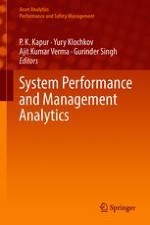2019 | OriginalPaper | Chapter
Conceptual Framework of How Rewards Facilitate Business Operations in Knowledge-Intensive Organizations
Authors : Shweta Shrivastava, Shikha Kapoor
Published in: System Performance and Management Analytics
Publisher: Springer Singapore
Activate our intelligent search to find suitable subject content or patents.
Select sections of text to find matching patents with Artificial Intelligence. powered by
Select sections of text to find additional relevant content using AI-assisted search. powered by
